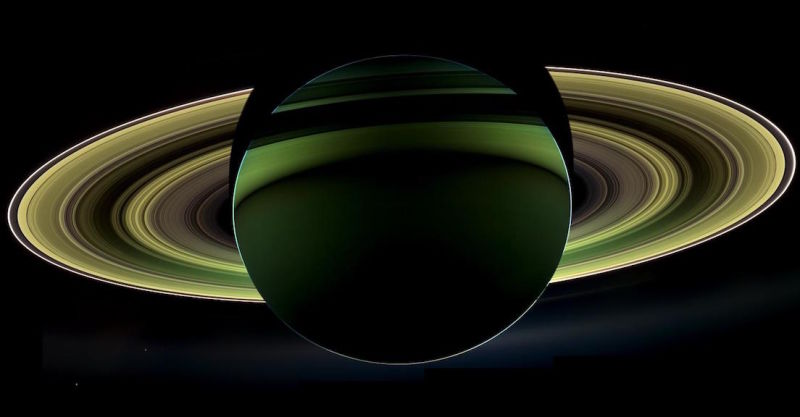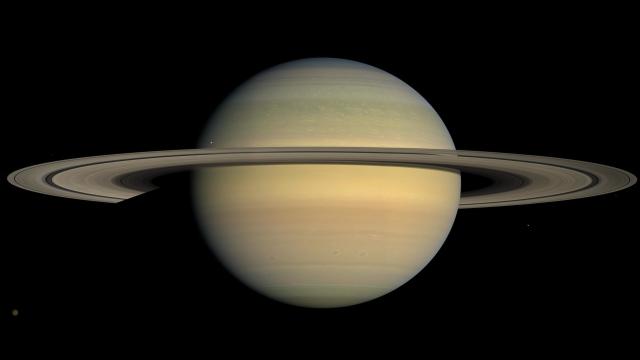The ending of NASA’s Cassini mission is a truly intoxicating cocktail of emotions; on one hand, the data from this 20-year-long mission will fuel scientific research for years to come. On the other hand, where are we going to get our regular updates on everyone’s favourite gas giant? What about the photos? Seriously, our Saturn-induced FOMO is about to skyrocket.
Image: NASA
This week, the intrepid spacecraft completed the 15th of its 22 Grand Finale dives between the gas giant and its rings. As the spacecraft’s adventure draws closer to its final coda, many questions remain, including one that seems like it’d have an obvious to answer: How long is a day on Saturn?

Saturn, taken by Cassini in 2012. (Image: NASA)
According to Cassini scientist Jo Pitesky, we’re still not sure after all these years. When Voyager 2 visited Saturn back in 1981, it recorded the planet’s rotational period as 10 hours, 39 minutes. But when Cassini visited the gas giant, it measured the day as 10 hours, 47 minutes. Each time Cassini has tried to pin down the exact length of a Saturnian day, the numbers change.
“It’s very easy to find the length of a day on a terrestrial-type planet, because you can just watch features on the surface over the course of a day and say ‘ah-ha, that’s the length of a day,’” Pitesky told Gizmodo. “With gas giants — or ice giants as we now call Uranus and Neptune — it’s harder because the speed at which the clouds are making their way around the planet has absolutely nothing to do with the actual rotation rate of the planet.”

Earth from within Saturn’s rings, taken by Cassini. (Image: NASA)
So, when it comes to determining the length of day on gaseous planets, scientists typically look at a planet’s magnetic field. The planet’s magnetic poles are typically tilted with respect to a planet’s spin axis, which usually helps astronomers figure it all out. However, “Saturn has made this extraordinarily difficult,” Pitesky noted.
“Over the last three months, we’ve moved Cassini as close as we can go in between the upper layers of atmosphere and innermost parts of its rings,” she explained. “And we’re finding that the [axial] tilt is much smaller than scientists even thought of.” Saturn’s magnetic field is unusually well-aligned with its rotation axis — in fact, Cassini estimates the tilt is much less than 0.06 degrees, according to NASA.
This observation has thrown off astronomers, because tilt is generally thought to sustain magnetic field-generating currents, called a dynamo, within a planet’s core. Those currents, if they exist, could in theory be used to determine the true length of a Saturnian day. At this point, there are still so many more questions than answers.
“It must be that theres a dynamo in there somewhere,” Pitesky said. “There’s something going on within the innards of Saturn itself.” Gathering more precise measurements in the coming weeks might help scientists get a better estimate of Saturn’s day.
And, of course, the Cassini team will continue to gather all of the other science (and fantastic photos) it can before the end of the mission. There are still several more ring dives leading up to the finale on September 15, in which the orbiter will send back updates until its very last moment.
Until then, we’ll be watching, waiting and savouring every minute we have left with our favourite orbiter.
